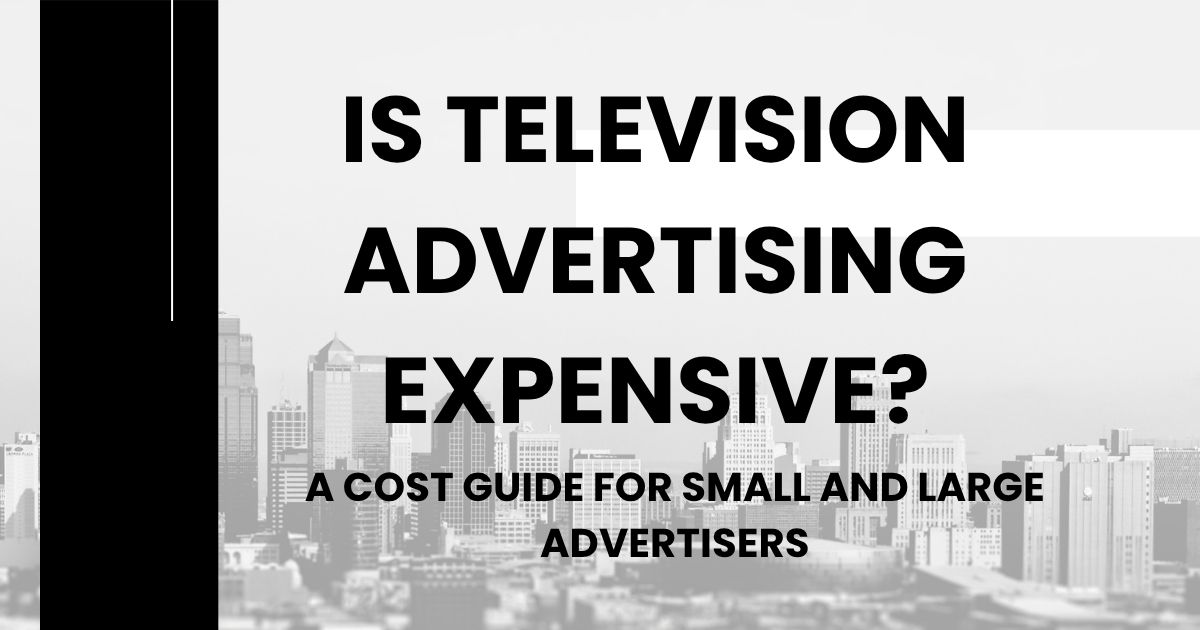Television advertising has dominated the marketing landscape for decades, but many businesses hesitate to explore this medium due to concerns about cost. The question “is television advertising expensive?” doesn’t have a simple yes or no answer. The reality is more nuanced than you might expect.
Understanding TV advertising costs can help you make informed decisions about your marketing budget. This comprehensive guide breaks down everything you need to know about television advertising expenses, from production costs to airtime fees, and explores whether this traditional medium still offers value for modern businesses.
Understanding Television Advertising Costs
Television advertising costs vary dramatically based on several key factors. The total expense includes two main components: production costs and airtime costs.
Production costs cover everything needed to create your commercial, including scriptwriting, filming, editing, and post-production. These expenses can range from a few thousand dollars for a basic local commercial to hundreds of thousands for a high-end national campaign.
Airtime costs represent the fee you pay to broadcast your commercial on television networks. This is where the “expensive” reputation often comes from, as prime-time slots on major networks command premium prices.
Factors That Determine TV Advertising Costs
Market Size and Location
Local television advertising typically costs significantly less than national campaigns. A 30-second spot on a local station might cost anywhere from $200 to $2,000, while the same duration on a national network during prime time can cost $20,000 to $300,000 or more.
Regional advertising falls somewhere in between, offering broader reach than local spots while remaining more affordable than national campaigns.
Time Slots and Programming
When your commercial airs dramatically affects the price. Prime-time slots (8 PM to 11 PM) command the highest rates due to larger audiences. Late-night and early morning slots offer more affordable options with smaller but potentially more targeted audiences.
Popular programming also drives up costs. Sports events, award shows, and hit series attract premium pricing due to their large, engaged audiences.
Audience Demographics
Networks charge based on their ability to reach specific demographics. Channels targeting affluent viewers or hard-to-reach age groups often command higher rates. The cost per thousand viewers (CPM) varies significantly based on the demographic profile of the audience.
Commercial Length
While 30-second spots are standard, you can also purchase 15-second, 60-second, or even longer formats. Longer commercials cost more but may offer better value per second in some cases.
Breaking Down Production Costs

Basic Production Elements
A simple television commercial requires several production elements. Script development, casting, location scouting, and equipment rental all contribute to the overall cost.
For basic local commercials, production costs might range from $5,000 to $25,000. This includes minimal locations, simple scripts, and straightforward filming requirements.
Mid-Tier Production
Mid-range commercials incorporating professional actors, multiple locations, or special effects typically cost between $25,000 and $100,000 to produce. These commercials feature higher production values and more sophisticated storytelling.
High-End Production
Premium commercials featuring celebrity endorsements, elaborate sets, extensive special effects, or complex storylines can cost $100,000 to $500,000 or more. Major national brands often invest heavily in production to create memorable, high-impact advertisements.
Airtime Costs Across Different Markets
Local Television Advertising
Local television offers the most affordable entry point into TV advertising. Costs vary by market size, with smaller markets offering lower rates. A local business might spend $500 to $5,000 per week for a modest advertising schedule.
Local advertising works particularly well for businesses serving specific geographic areas, such as restaurants, retail stores, or service providers.
Regional Television Advertising
Regional campaigns target multiple markets within a specific area. These campaigns cost more than local advertising but offer broader reach. Regional advertising might cost $5,000 to $50,000 per week, depending on the markets covered and the advertising schedule.
National Television Advertising
National television advertising represents the highest cost tier. Major networks charge premium rates for access to their nationwide audiences. A national campaign might cost hundreds of thousands to millions of dollars for a significant presence.
Comparing TV Advertising to Other Media
Digital Advertising Costs
Digital advertising often appears more affordable upfront, but costs can add up quickly. Social media advertising, search engine marketing, and display advertising all require ongoing investment and optimization.
Television advertising offers predictable costs and broad reach, while digital advertising provides detailed targeting and measurable results.
Radio Advertising
Radio advertising typically costs less than television but offers audio-only messaging. Radio works well for certain types of businesses but lacks the visual impact of television.
Print Advertising
Newspaper and magazine advertising has declined in effectiveness as readership decreases. Television often provides better reach and engagement than print media.
Strategies to Reduce TV Advertising Costs
Optimize Your Media Buy
Working with experienced media buyers can help you find the best deals and most effective time slots. They understand rate negotiations and can often secure better pricing than businesses attempting to buy airtime independently.
Consider Alternative Time Slots
Early morning, late night, and weekend slots often offer significant savings compared to prime-time advertising. These slots may reach smaller audiences but can provide excellent value for businesses targeting specific demographics.
Negotiate Package Deals
Many stations offer package deals that include multiple spots or extended commitments at reduced rates. These packages can provide substantial savings compared to individual spot purchases.
Leverage Local Sports and Events
Local sports broadcasts and community events often offer affordable advertising opportunities with engaged audiences. These programs may cost less than network programming while delivering strong local reach.
Maximizing Your TV Advertising ROI

Target Your Audience Effectively
Understanding your target audience helps you choose the most cost-effective programming and time slots. Demographic research ensures your advertising dollars reach the right viewers.
Create Compelling Content
High-quality, engaging commercials generate better results regardless of when they air. Investing in strong creative development often provides better returns than simply buying more airtime.
Integrate with Other Marketing Channels
Television advertising works best as part of a comprehensive marketing strategy. Combining TV with digital marketing, social media, and other channels creates synergistic effects that improve overall campaign performance.
Track and Measure Results
Implementing tracking systems helps you understand which time slots, programs, and creative approaches deliver the best results. This data enables you to optimize future campaigns for better ROI.
The Future of Television Advertising Costs
Streaming and Connected TV
The rise of streaming services and connected TV platforms is creating new advertising opportunities. These platforms often offer more affordable entry points and better targeting capabilities than traditional television.
Connected TV advertising allows for more precise audience targeting while maintaining the visual impact of television commercials.
Programmatic TV Buying
Automated buying systems are making TV advertising more accessible and potentially more affordable. Programmatic platforms can help optimize ad placement and reduce costs through automated bidding.
Making the Right Decision for Your Business
Television advertising isn’t inherently expensive or cheap—it depends on your specific goals, target audience, and budget. Small businesses can find affordable opportunities in local television, while larger companies might justify national campaigns based on their broader reach and brand-building potential.
Consider your business objectives, target audience, and available budget when evaluating television advertising. Compare the costs and benefits against other marketing channels to determine the best allocation of your marketing resources.
The key is understanding that television advertising costs vary widely based on your specific needs and goals. With careful planning and strategic buying, television can provide excellent value for businesses of all sizes.
While assessing whether television advertising is expensive through a complete cost breakdown, it’s also valuable to master the art of website conversion rate optimization to ensure your ad spend translates into measurable results.





